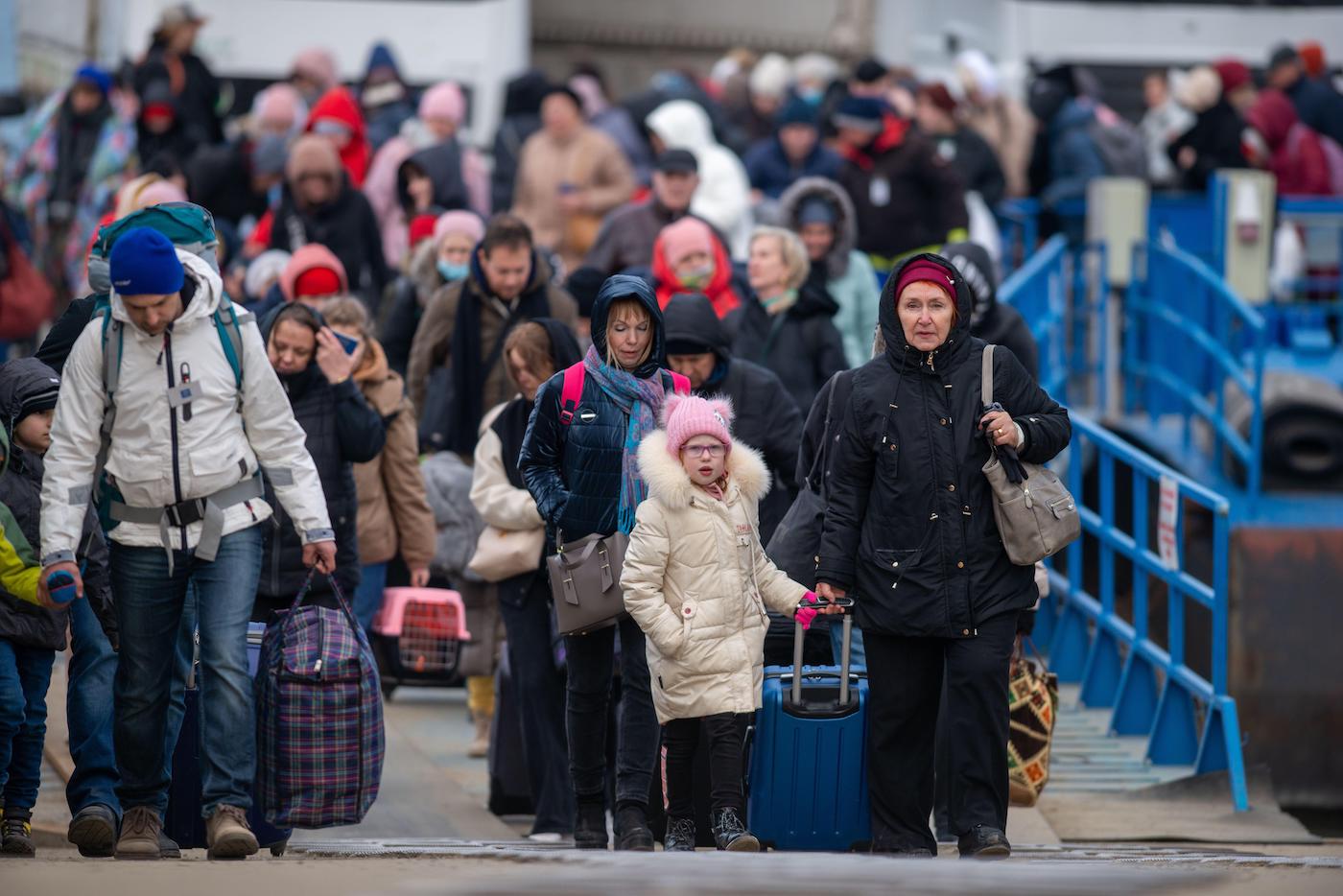November 17, 2022

By Tallan Donine and Daniel Solomon
The situation in Ukraine remains dire. Despite the substantial international attention to the crisis, little analysis of the options available to help protect vulnerable populations or head-off future escalation of atrocity risks in Ukraine exists.
On October 11, 2022, the Simon-Skjodt Center for the Prevention of Genocide convened a private roundtable under the Chatham House rule. During the discussion, three Ukraine experts presented about potential scenarios of mass atrocity escalation in Ukraine.
The discussion aimed to encourage more systematic thinking about how the current pattern of mass atrocities in Ukraine could escalate to inform policy makers’ consideration of preventive options. This blog distills key themes from the discussion, which we elaborate on in a rapporteur’s report.
Russian ideology and motives for atrocities
The presenters offered multiple explanations for Russian mass atrocities.
One presenter assessed that the purpose of Russian atrocities is to change Ukrainian behavior to discourage open expressions of Ukrainian nationalism and opposition to the Russian occupation.
Two judged that Russia’s ideological and political objectives are more comprehensive, to eliminate the Ukrainian national community.
One of the presenters also emphasized that the genocidal goal of destroying Ukraine’s national community encourages President Putin to take greater military risks. They also said that Russia’s genocidal ideology and its justifications for civilian casualties in Ukraine may spread and “radicalize” a significant majority of the Russian population.
Geographic variation in violence
One presenter said that Russia would concentrate violence against civilians in two main areas: (1) increased attacks in urban areas around Kherson, in Ukraine’s southeast (Note: This assessment was made before Russia’s recent withdrawal from Kherson.), and (2) in the Luhansk region, as Russia’s retreat into the Russian Federation and the so-called Donetsk People’s Republic prompt new violence.
Another presenter said that the Russian military will try to advance towards Kyiv, raising the possibility of new violence against civilians in Ukraine’s northern regions. Additionally, the presenter suggested that Belarus may stage attacks on western Ukraine to advance Russian objectives.
Multiple presenters judged that anti-civilian attacks and Russian attempts to cut off access to necessities such as food and heating would occur most heavily along the front lines.
Different types of violence
The presenters discussed the following types of Russian violence with the potential to increase or worsen:
- Targeting of population centers as Ukraine’s military advances in Russian-occupied territories.
- Predation as Russia deploys a large group of new, untrained conscripts to exercise military control over a shrinking set of occupied territories in Ukraine. Presenters also highlighted a widespread risk of conflict-related sexual violence.
- Deliberate attacks on civilian infrastructure as Russia seeks to worsen the humanitarian situation in Ukraine and neighboring countries.
Potential atrocity prevention actions
The presenters proposed multiple ways for US policy makers and other international actors to reduce immediate and longer-term harm to civilians in Ukraine, including by:
- Increasing the “permeability” of the front lines to allow more civilians to flee ongoing fighting and support humanitarian operations to provide basic needs to civilians who are unable or do not want to flee front-line areas. Presenters suggested that policy makers should view humanitarian assistance as a strategy to advance atrocity prevention goals, rather than a separate policy arena.
- Assisting civilian self-protection groups in heavily contested areas. This assistance could include financial assurances to volunteers, salary support, technical supplies such as body armor, and emergency-response training.
- Supporting early warning by Ukrainian military forces and former civilian officials to alert civilian populations of impending attacks. This support could include training on atrocity indicators and warning signs as well as assistance in communicating warnings directly to civilians in occupied areas.
- Lowering barriers to refugee intake to make the process of seeking refugee protection in the United States more straightforward for Ukrainians whom the war has displaced.
- Encouraging dissent in Russia, such as by highlighting Russia’s significant military losses in Ukraine and facilitating flight from Russia.
For more details on this discussion, download the full rapporteur’s report.
Tallan Donine is a research assisant with the Simon-Skjodt Center. Daniel Solomon is a researcher with the Simon-Skjodt Center.
View All Blog Posts